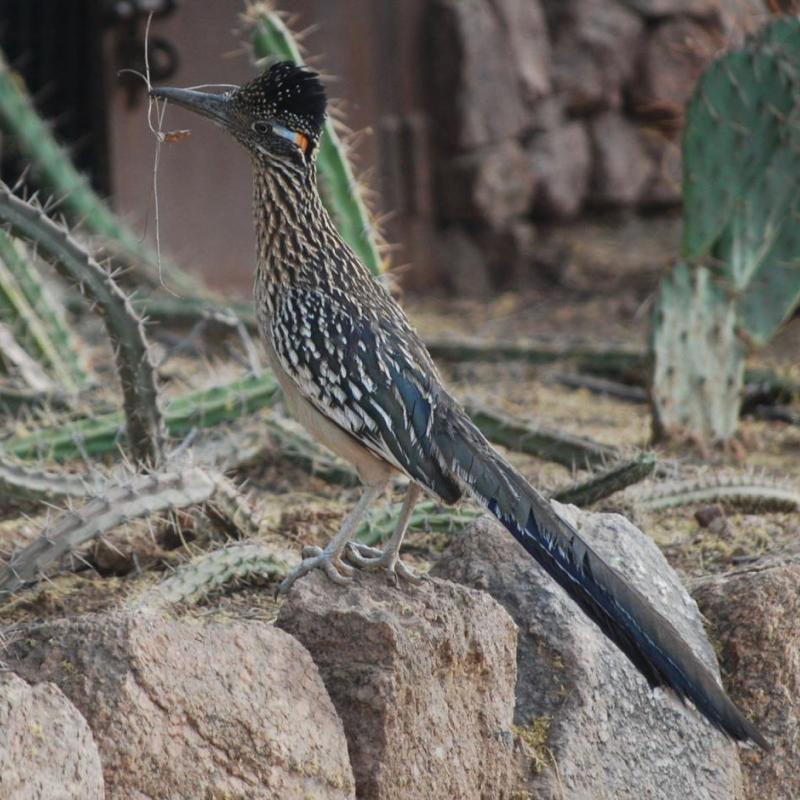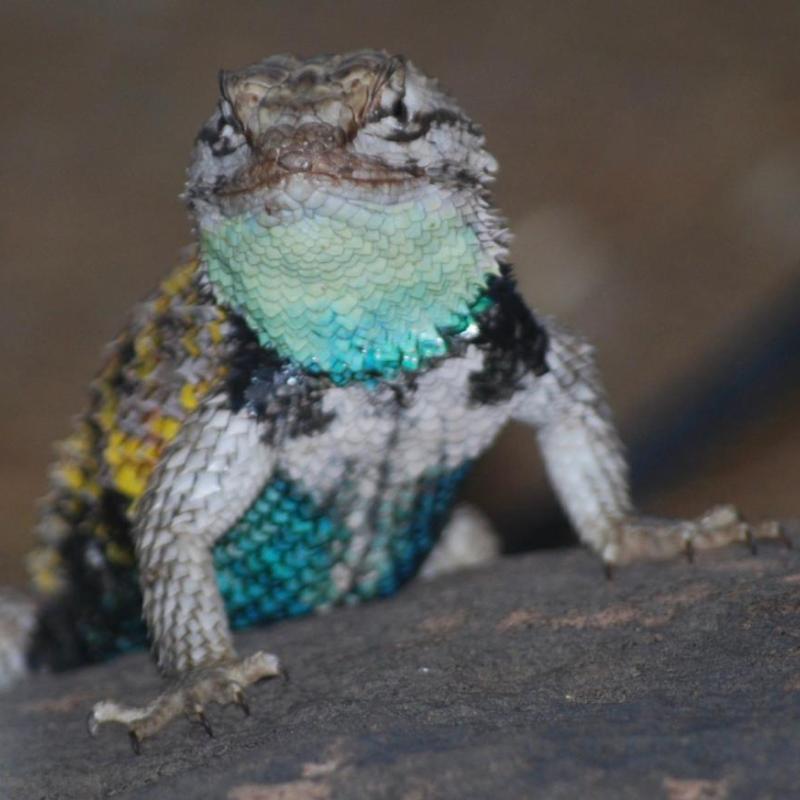Close Encounters with Creepy Critters
I have always loved the desert. One sits down on a desert sand dune, sees nothing, hears nothing. Yet through the silence something throbs, and gleams.
―Antoine de Saint-Exupéry
Anyone new to Arizona has been regaled by long-time residents and native Arizonans about their close encounters with wildlife. Scorpion stories are ubiquitous, though they never fail to make you check your cabinets, walls and shoes when you are at home. We see coyotes in farm fields and desert areas along the roads and highways and in the mountain areas where we hike.
One of the most entertaining encounters I have had involved a moment at ASU’s West campus many years ago. In the days before light rail, the Loop-101 and the Loop 202, many West Valley commuters to the Tempe campus opted to take the West campus shuttle, which in those days was little more than a city bus with ASU decals. One early morning, I was driving to the south parking lot to catch the shuttle when a roadrunner ran across the road in front of me. A few seconds later, I was astonished to see a coyote loping across the road, apparently in (futile) pursuit of the roadrunner. To this day I wonder if Chuck Jones witnessed the same thing and was inspired to create the Road Runner and Wile E. Coyote as a result.
Many encounters with wildlife in Arizona can be equally as jaw-dropping, but for different reasons. Those who enjoy the outdoors are more likely to experience the dangers of encountering some of our more interesting residents, such as rattlesnakes, coyotes and javelina. Rattlesnakes frequent hiking trails in the spring as temperatures warm and they come out to enjoy the sun. Arizona boasts a large variety of these pit vipers, including the western diamondback and the mohave which are both common in the Sonoran Desert areas that include Phoenix and Tucson.
Kira Assad, a staff member in the Department of English, says that growing up in rural areas of North Phoenix taught her from a young age to be aware of her surroundings. We have often heard that we are supposed to listen for a buzzing sound from an unseen rattlesnake, but Kira says that it is more like the sound of running water. Rattlesnakes can be very well camouflaged in the desert landscape, which Assad emphasizes in a story about her mother nearly picking up a rattlesnake in the backyard during an Easter egg hunt, thinking that it was a stick or a collection of pinecones.
While those of us in urban areas might not have to be as vigilant about rattlesnake encounters, scorpions are common household visitors. The Arizona bark scorpion is a prodigious climber, and residents can be horrified to find the blond-colored arachnid on walls or even clinging to the ceiling. While not usually lethal, scorpion stings can cause a tingling, numbing pain that radiates from the sting site.
Scorpions tend to hide in dark corners and can flatten themselves to the thickness of a dime to squeeze through cracks and crevices, which makes keeping them outdoors all the more challenging.
English lecturer Heather Hoyt experienced this firsthand when she was stung just under the edge of her fingernail by a tiny scorpion hiding under an umbrella stand. Hoyt says that the most disturbing part of being stung, aside from not seeing her attacker until it was too late to avoid it, was that the pain left and then returned hours later with renewed intensity. Her encounter led to a tetanus shot and a positive experience with the nice folks of the Arizona Poison and Drug Information Center hotline, who even called her back to check on her status and make sure she wasn’t experiencing any adverse effects. Scorpions tend to hide in dark corners and can flatten themselves to the thickness of a dime to squeeze through cracks and crevices, which makes keeping them outdoors all the more challenging. Summer evening hunts with a black light will reveal how a scorpion fluoresces in the dark—if you can handle your skin crawling at the sight of them.
Geckos are among the cuter and more benign of the desert critters that make their way into our homes. While the word gecko might conjure images of a certain green insurance icon, Arizona’s geckos are smaller and more neutrally colored, usually with spots or bands of pinkish tan and brown tones. The Mediterranean gecko and a variety of different banded geckos are common in the warmer areas of Arizona, and usually come out at night to feast on insects. Many geckos will also squeak when they feel threatened. These small creatures can appear quite delicate, but are excellent survivors in our desert climate. I have witnessed a banded gecko arch its tail over its back as a defense mechanism trying to convince me that it was a scorpion. Happily, these geckos also feed on baby scorpions, so they are welcome visitors if you live in an area with a scorpion issue.
Arizona’s lizard population includes one of only a small handful of venomous lizards: the Gila monster. Named for the Gila River, the Gila monster is less monstrous than its name suggests, tending to live in out-of-the-way areas where few people travel. These lizards are also important in many Native American cultures. For the Navajo, the Gila monster is a sacred animal whose tough, armored exterior suggests survival and strength; it is a powerful symbol of healing and divination of illness. Despite being a venomous lizard, Gila monsters rarely bite people, only doing so if provoked. Arizona laws protect Gila monsters from human interaction, so admire them from a distance.
The desert spiny lizard is common throughout much of Arizona, often hanging out in trees, on fences and on the side of your stucco-covered house. These lizards can be quite colorful with the various orange, tan and brown tones decorating their backs and splashes of purple, greenish blue, yellow and orange on male lizards. These lizards hibernate during the cooler months, so it’s a sure sign of the return of the Arizona heat when they re-emerge on your fence in the spring.
While coyotes and javelina might get more attention due to their size and visibility, consider some of the smaller, better-hidden desert residents the next time you go hiking or sit on your porch in the evening. You might just have your own Arizona tale to tell your new neighbors or colleagues when they ask you about your own close encounters with Sonoran Desert wildlife.
Image 1: A male roadrunner gathering nest materials at the Desert Botanical Gardens. Photo by Dana Tait.
Image 2: A male desert spiny lizard showing his dominance at the Desert Botanical Gardens. Photo by Dana Tait.


